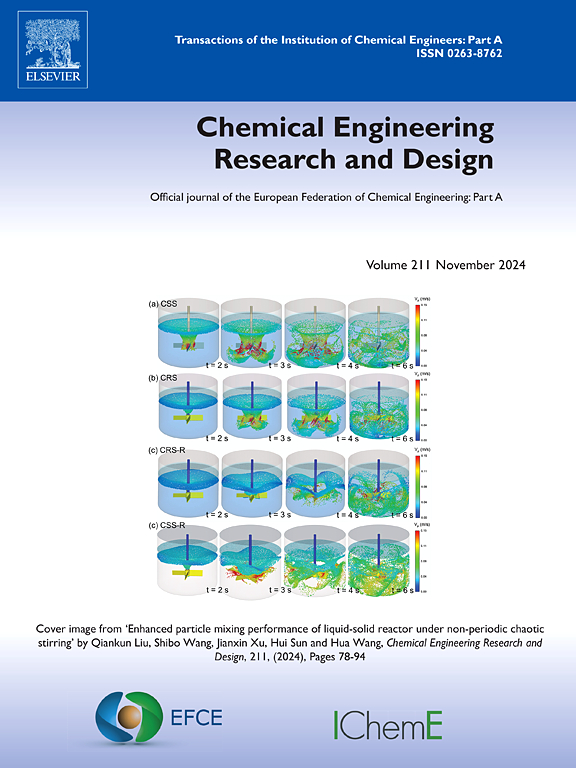Exploring the potential of MnWO4/MXene/carbon xerogel photocatalyst for photo efficient degradation of crystal violet
IF 3.7
3区 工程技术
Q2 ENGINEERING, CHEMICAL
引用次数: 0
Abstract
Photocatalytic degradation under visible light offers a sustainable approach for removing organic pollutants from wastewater. In this study, MnWO4, MXene, carbon xerogel, and their composites were synthesized through a simple and efficient method and evaluated for the photocatalytic degradation of crystal violet (CV) dye. Among them, the MnWO4/MXene/carbon xerogel composite exhibited superior performance, achieving 95 % CV dye removal within 60 min under optimized conditions (25 mg catalyst dose, 10 ppm dye concentration, pH 12). Kinetic studies confirmed the enhanced degradation rate compared to the individual components. The improved activity was attributed to the formation of an S-scheme heterojunction between MnWO4 and MXene, facilitating efficient charge separation and maintaining strong redox potentials. Hydroxyl radicals (•OH) and superoxide radicals (•O2⁻) were identified as the main reactive species. Additionally, the composite demonstrated good stability and recyclability, retaining over 90 % efficiency after four cycles. These findings suggest that the MnWO4/MXene/carbon xerogel composite is a promising, stable photocatalyst for practical environmental remediation applications.
探索MnWO4/MXene/碳干凝胶光催化剂光高效降解结晶紫的潜力
可见光下的光催化降解为去除废水中的有机污染物提供了一种可持续的方法。本研究采用简单高效的方法合成了MnWO4、MXene、碳干凝胶及其复合材料,并对其光催化降解结晶紫(CV)染料的性能进行了评价。其中,MnWO4/MXene/碳干凝胶复合材料表现出优异的性能,在优化条件(25 mg催化剂用量,10 ppm染料浓度,pH 12)下,在60 min内脱除95% % CV染料。动力学研究证实,与单个组分相比,降解率有所提高。活性的提高是由于在MnWO4和MXene之间形成了S-scheme异质结,促进了有效的电荷分离并保持了强氧化还原电位。羟基自由基(•OH)和超氧自由基(•O2)被确定为主要的反应物质。此外,复合材料表现出良好的稳定性和可回收性,经过四次循环后,效率保持在90% %以上。这些发现表明,MnWO4/MXene/碳干凝胶复合材料是一种有前途的、稳定的光催化剂,可用于实际环境修复。
本文章由计算机程序翻译,如有差异,请以英文原文为准。
求助全文
约1分钟内获得全文
求助全文
来源期刊

Chemical Engineering Research & Design
工程技术-工程:化工
CiteScore
6.10
自引率
7.70%
发文量
623
审稿时长
42 days
期刊介绍:
ChERD aims to be the principal international journal for publication of high quality, original papers in chemical engineering.
Papers showing how research results can be used in chemical engineering design, and accounts of experimental or theoretical research work bringing new perspectives to established principles, highlighting unsolved problems or indicating directions for future research, are particularly welcome. Contributions that deal with new developments in plant or processes and that can be given quantitative expression are encouraged. The journal is especially interested in papers that extend the boundaries of traditional chemical engineering.
 求助内容:
求助内容: 应助结果提醒方式:
应助结果提醒方式:


